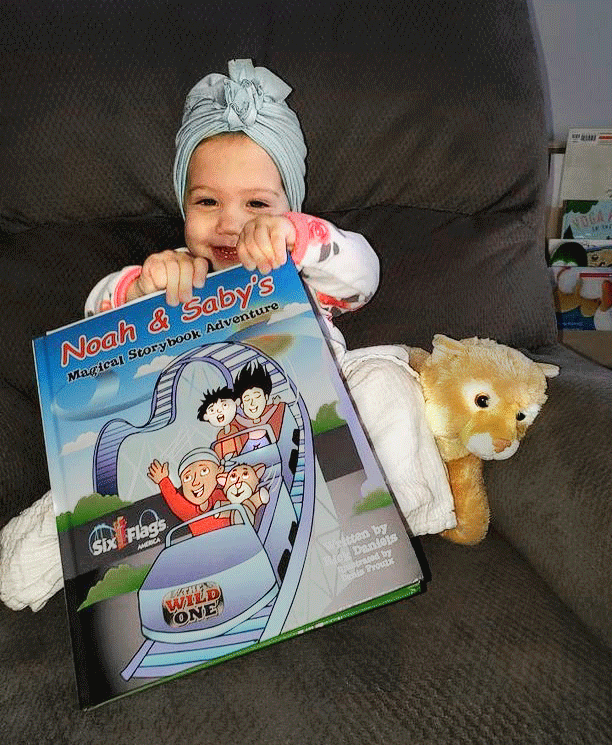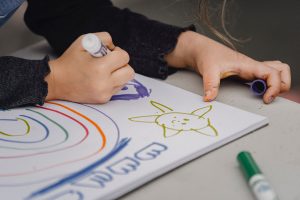
The fight against cancer continues, and recent discoveries get us closer to finding a final cure for this challenging disease. Among these, we can name two current studies that shed light on approaching cancer and its reaction to specific protein synthesis.
The first study includes The Cardiff University, located in Wales, which discovered a method to eliminate cancer cells using our immune system. This work in progress recognizes and eliminates most cancer types through a class I-related protein (MR1) while leaving other healthy cells intact.
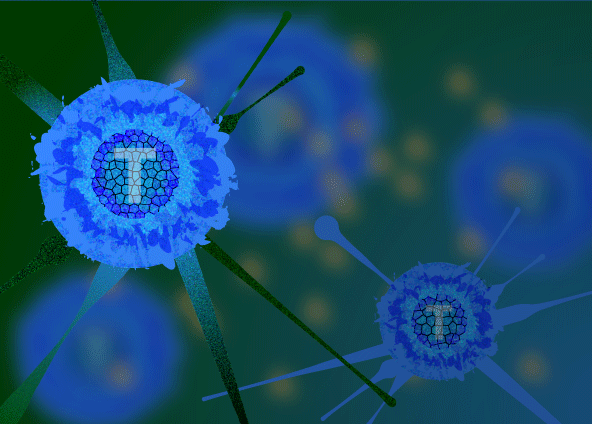
The use of T-cells to combat cancer has a long story. One of these uses is the medicine called CAR-T (Chimeric Antigen Receptor).
In other words, scientists claimed that a T-cell, a white blood cell that protects our body from external agents (antigens), can also be used to eliminate cancer cells by attacking tumors, which means there is a possibility that a T-cell might eliminate a wide range of cancers, something believed to be unfeasible.
The still ongoing study has shown that this T-cell interacting with the MR1 molecule, which is located all over the human body, and cancers are not the exception, could spot the affected cell and destroy it.
Heading
A Hopeful History Combating Cancer
The use of T-cells to combat cancer has a long story. For example, a medicine called CAR-T (Chimeric Antigen Receptor), which uses the patient’s T-cells, is designed to send an immune response against cells that show a particular antigen. Nevertheless, this treatment is reserved as a single dose, and it could also carry secondary symptoms which is why it requires an extensive follow-up.
Regardless of its risks, CAR-T has shown positive results being able to produce a complete remission. However, this treatment can only be used for blood cancers such as acute lymphoblastic leukemia and advanced lymphomas.

In the investigation conducted by Cardiff University, T-cells can also eliminate solid tumors, which will reveal a general treatment to eliminate all types of cancer.
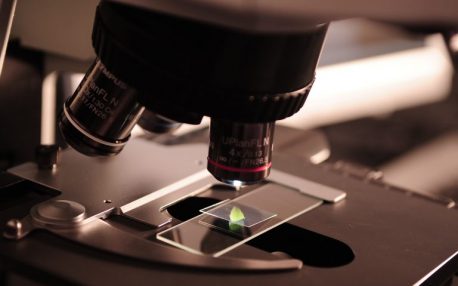
The discovery is, without a doubt, revealing because through this ‘key’ the lymphocyte flags the malignant unit and proceeds to combat it.
There is still work to do to find a solution to solid tumors (sarcomas and carcinomas), such as the ones that occur in bones, muscles, and organs.
In the investigation conducted by Cardiff University, T-cells can also eliminate solid tumors, which will reveal a general treatment to eliminate all types of cancer.
Another type of therapy used to combat cancer is TIL (Tumor-infiltrating Lymphocytes). These T-cells are located inside the tumor. Once these have been collected, an examination is performed to find which cells recognize the tumor faster. These units are then enriched to increase their number, rapidly destroying the tumor and blocking its signals to the immune system
How Does it Work?
As described above, in the discovery, the T-cell interacts with a molecule called MR-1 located in every single cell of the human body, including cancer cells. The discovery is, without a doubt, revealing because through this ‘key’ the lymphocyte flags the malignant unit and proceeds to combat it.
The projected therapy for this new treatment begins with collecting the T-cells. Then these cells are genetically modified by using an RNA chain inserted with a harmless virus. At this point, the cell is ready to recognize cancer cells.
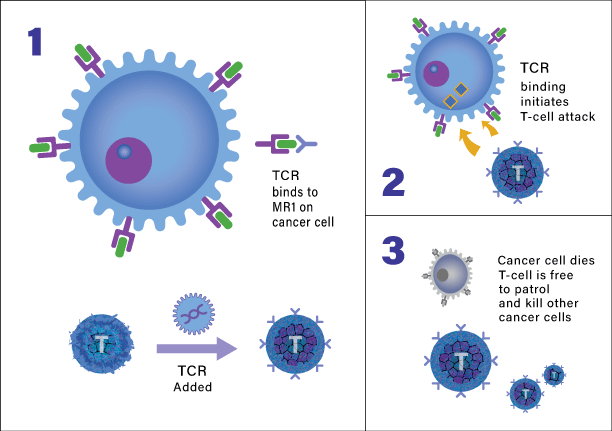
The T-cell locates the cancer cell and attacks it.
The projected therapy for this new treatment begins with collecting the T-cells. Then these cells are genetically modified by using an RNA chain inserted with a harmless virus. At this point, the cell is ready to recognize cancer cells.
Next, the modified cells are duplicated in a laboratory. The modified cells are injected back into the patient. The new treatment with the MR-1 molecule has been used only in animals, and there is still a long road ahead of testing before human trials.
These results are also fascinating because the T-cell has eliminated the cancer cells leaving the rest of the healthy tissue unaffected.
New Alternatives to Combat Acute Lymphoblastic Leukemia.
The second discovery to fight cancer involves a potential solution among the most common cancers that affect children called acute lymphoblastic leukemia. Recently, a team of researchers made discoveries that could improve this disease treatment and open a way to create new therapies.

This proliferation of white blood cells contains a genetic problem that includes the protein MEF2D and four other factors that control gene activity. This activity involves their interaction and why the factors are triggered.
On this subject, it is essential to highlight that acute lymphoblastic leukemia (ALL) generates recurrent chromosomal rearrangements that result in chimeric fusion proteins that eventually drive to tumor formation.
This study involves Aichi Medical University, Nagoya University, and the National Hospital Organization Nagoya Medical Center.
The solution contemplates the dynamics of how proteins work and their behavior. In this case, acute lymphoblastic leukemia involves the abnormal propagation of lymphocytes (white blood cells).
- Enlarged lymph, liver, or spleen nodes
- Pain below the rib cage
- Fatigue
- Loss of weight
- Pale skin
- Other symptoms
The investigation focuses on blocking these signals (as if we were talking about a communication process) from the proteins, thereby stopping the white cells from proliferating. The result also means that once the investigations are conclusive, it will be possible to create a therapy that produces the same result.
By: Eduardo Guillen

